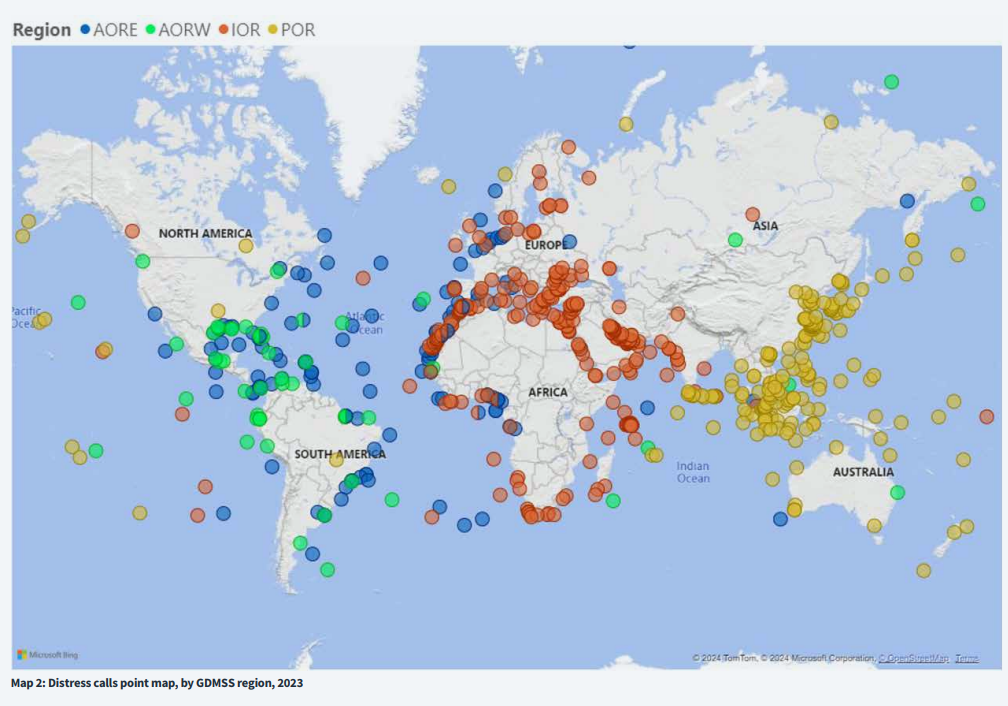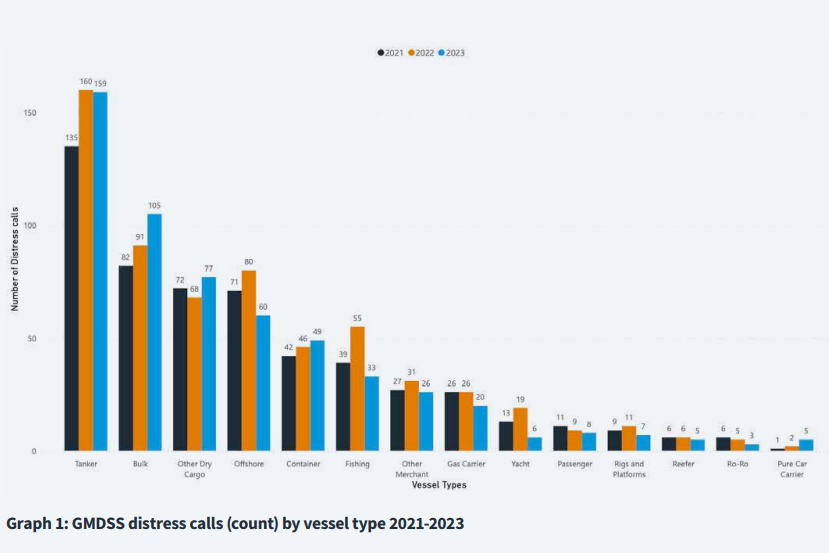The 2024 edition of The Future of Maritime Safety Report from Inmarsat Maritime reveals that Global Maritime Distress and Safety System (GMDSS) distress calls decreased by 7.6% in 2023 over the previous year.
Despite this decline, the service was still triggered on 788 occasions and remains close to the six-year average of 799 calls per year. According to Inmarsat, this statistic underscores the ongoing challenges in maritime safety and the need for real improvements.
Key takeaways
- Fewer total losses per year does not provide a full safety picture for shipping: GMDSS distress signals remain consistently high at 799 per year (over a six-year average).
- Data sharing mechanisms are required so stakeholders can pool data. Comparing and overlaying data will provide more nuance and greater confidence.
- Shipping should develop a list of standard data points to monitor and report. This could include: casualties and incidents, injuries or deaths at sea, and near misses. The future output of Inmarsat’s SEASAFE Working Group could provide a blueprint for data sharing.
- Trend analysis can help prioritise the development of safety measures. A particular emphasis should be placed on developing risk treatments for well-known and recurring issues
- Concerns about data confidentiality and reputational damage can be overcome by anonymising casualty and incident data. Greater visibility should not be punitive, it should be empowering for all those concerned with ship safety
- The established international regulatory process may need to be reviewed to ensure it is proactive, agile and responsive. As we move forward the interdependency of the human element and technology must be at the forefront of regulators’ and shipowners’ minds.
- Addressing safety challenges associated with shipping’s transition to alternative fuels and emissions reduction technologies is vital. Seafarer welfare remains paramount to enabling a successful transition. Crew must be suitably trained to handle new fuels and technologies confidently and safely.
The report suggests that the maritime industry is beginning to overcome some operational challenges linked to the Covid-19 pandemic, such as limited inspections and disrupted maintenance schedules.

However, with the emergence of potential new safety risks associated with future fuels – particularly in the context of the industry’s transition to more sustainable practices – and escalating geopolitical tensions, the industry must intensify its efforts to mitigate preventable safety issues.
Vessels with most distress calls in 2023
Tankers led the distress call statistics for the sixth consecutive year, with 159 calls, followed by bulk carriers with 105, and other dry cargo vessels with 77. The average rate of distress calls per 10,000 registered vessels in 2023 was 45. Tankers had the highest rate at 89 distress calls per 10,000 vessels, followed closely by gas carriers at 86, and container ships at 85. Vessels in the 1000 to less than 5,000 gross tonnage (GT) category accounted for a significant portion of distress calls, making up 21.6% of total calls in 2023.

Among vessel types, 11-12-year-old vessels across all categories were responsible for the highest number of GMDSS distress calls in 2023, indicating potential challenges related to aging fleets.
I recognise that data is not a panacea. Without context, it can mislead and confound. However, when validated and used thoughtfully, it can empower decision-makers. By working together and sharing anonymised data, industry regulators, shipowners and operators, insurers, seafarer unions and others can benchmark performance and take proactive steps to improve safety.
… said Peter Broadhurst, Senior Vice President, Safety and Regulatory, Inmarsat Maritime
































































